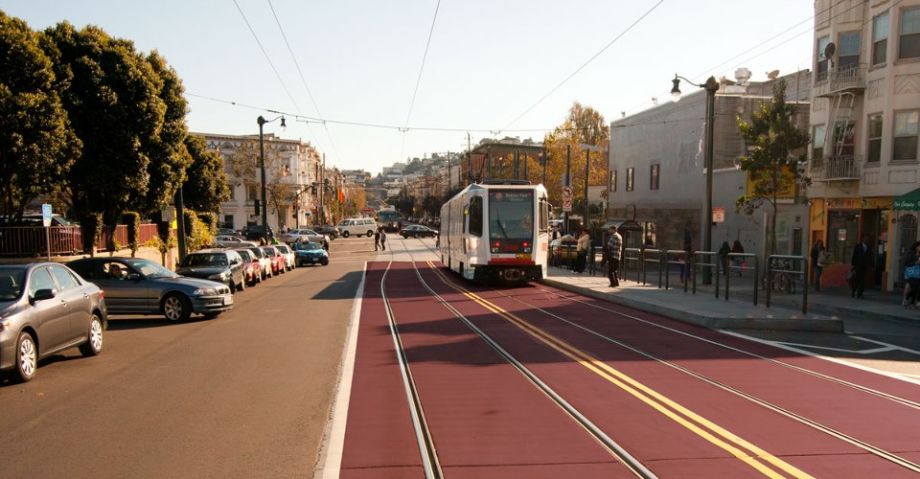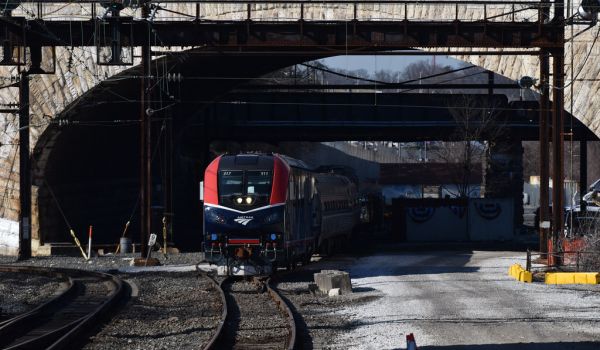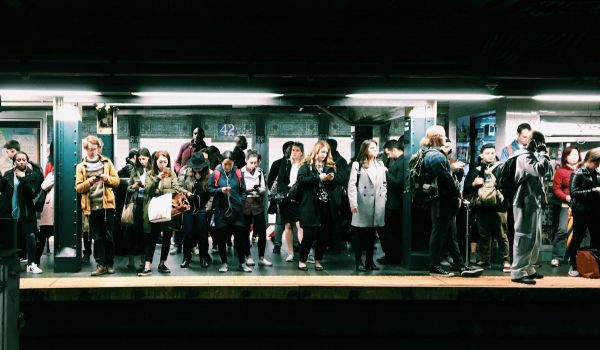Our weekly roundup of new and newsworthy transportation projects around the world.
Muni Speeds Up
San Francisco’s transit agency, Muni, launched a program called the Transit Effectiveness Project in 2008, with the goal of making incremental improvements to speed the city’s aging network of streetcars and buses. After five years of little action, Muni has finally advanced a slate of changes to many of its lines, ranging from adjustments taking advantage of signal priority, to more dedicated transit lanes, to cutting stops. Frequencies will also be increased, partly paid for by efficiency improvements that cut down on trip times and, therefore, labor and equipment costs.
The L Taraval would see the most dramatic improvement. Its long journey from streetcar route to full-fledged light rail would be complete, with dedicated lanes along its center-running Taraval segment in the Sunset District, the last segment to still mix with general car traffic. To take advantage of planned signal priority improvements, traffic lights would replace stop signs and the stops themselves would move from the corner before lights to right after them. All these changes could cut five minutes off the trip in each direction — a nearly 30 percent reduction.
On March 28, Muni’s Board of Directors will decide which of the proposals move forward.
Rail for Louisiana?
According to a feasibility study commissioned by regional planners in both cities, a rail connection between New Orleans and Baton Rouge could be built for just $262 million, with most of the tab underwritten by the feds. The 79-mile trip could take 95 minutes and tickets could go for as little as $10 — more in the realm of commuter fares than intercity ones. It could serve as many as 210,000 passengers in its first year and would start out with two round trips each day, which could increase to as many as eight.
Rail Gains in Spain
In contrast with deep declines in air travel and more modest drops in overall intercity travel, Renfe has reversed its falling passenger numbers on high-speed and long-distance trains: In 2013, the Spanish national rail operator hosted a record 25.2 million intercity trips. Total traffic is up 14.5 percent from 2012, and revenues have risen 2.7 percent.
Spain’s proliferating high-speed network saw the largest gains, with ridership up 21.2 percent, revenue up 5.2 percent (to 788 million euros) and occupancy up 6 percent (to 74.6 percent), despite the service offering 14.5 percent more seats. Renfe attributed this growth to reductions in coach class fares of around 11 percent, a bevy of discounts for young people and frequent travelers, easier Internet sales, and cheaper pricing options for those who buy tickets in advance.
Over the long term, cheap air travel and the launch of Spain’s high-speed network has almost completely eliminated the market for overnight trains. While these services accounted for the majority of Renfe’s seats in the 1980s, overnight trains took a nosedive in the 1990s and 2000s, having since been reduced to almost nothing.
Santiago’s Cheap Downtown Tunnel
At around $100 million per kilometer after adjusting for Chile’s lowest cost of living, Santiago’s Line 3 metro is cheap, but nothing groundbreaking for a Spanish-speaking country. (Language, it turns out, is one of the best proxies for transit construction costs.) It does, however, include some impressively cheap engineering on its most difficult segment: 3.7 kilometers (2.3 miles) of subway tunnel and three station caverns in the heart of downtown for a measly 75 million euros, or about $150 million after purchasing power parity adjustment.
Line 3 is a relief line with many connections to other stations. The Cal y Canto station is particularly difficult, situated beneath an existing Line 2 station, with the tunnel passing underneath a major underground expressway, historic train station and river. Spanish contractor Isolux Corsán will use the New Austrian Tunneling Method, a sequential process of drilling and blasting through the ground while precisely reinforcing the rock as you go, and was chosen partly for its similar work in Barcelona.
Manila’s First Subway
Metro Manila, the capital region that encompasses the city of Manila and Quezon City, already has a number of elevated rapid transit lines. Now, it’s about to get its first subway. The government on Thursday unveiled plans for a subway line worth 135 billion Philippine pesos, or $3 billion. At 20 kilometers (12.4 miles), the extension of the existing MRT Line 3 would run underground for 16 miles, with the rest elevated. After adjusting for the lower cost of living, this works out to $230 million per kilometer — more than twice what Santiago is paying — for a line that isn’t even totally below ground and has 11 widely spaced stations.
Stephen J. Smith is a reporter based in New York. He has written about transportation, infrastructure and real estate for a variety of publications including New York Yimby, where he is currently an editor, Next City, City Lab and the New York Observer.
















